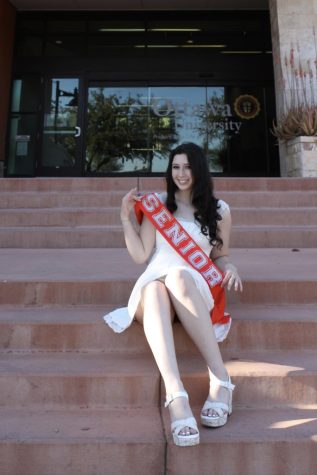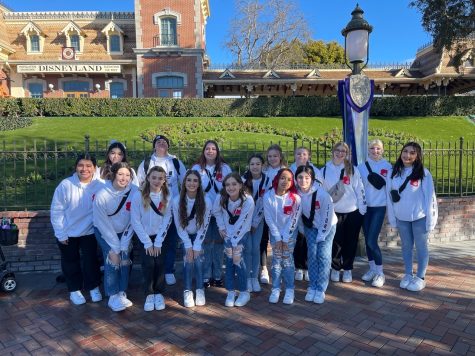Teachers Share Why: Classroom Setup
Based off of what students prefer, Amaki asked teachers how they structure their classroom and why.
In an article before, students were polled on their preferences for teaching styles. For this article, teachers were surveyed on their teaching styles. Teachers were asked about how their desks are arranged, their usual teaching style, and what time they had office hours.
 Out of 14 responses, 10 teachers responded having traditional seating arrangements. The other four teachers had flexible seating. Flexible seating consists of a flexible format with couches, bean bag chairs, desks, tall tables, yoga balls, and seating on the floor. The traditional format has uniform desks all facing the same way, usually in rows and columns. Around 66 percent of teachers have traditional seating formats. Compared to the students who preferred flexible seating. While many teachers like and would love to have flexible seating, getting the materials for flexible seating is expensive. If a teacher decides to integrate flexible seating slowly, students may fight over the new seats.
Out of 14 responses, 10 teachers responded having traditional seating arrangements. The other four teachers had flexible seating. Flexible seating consists of a flexible format with couches, bean bag chairs, desks, tall tables, yoga balls, and seating on the floor. The traditional format has uniform desks all facing the same way, usually in rows and columns. Around 66 percent of teachers have traditional seating formats. Compared to the students who preferred flexible seating. While many teachers like and would love to have flexible seating, getting the materials for flexible seating is expensive. If a teacher decides to integrate flexible seating slowly, students may fight over the new seats.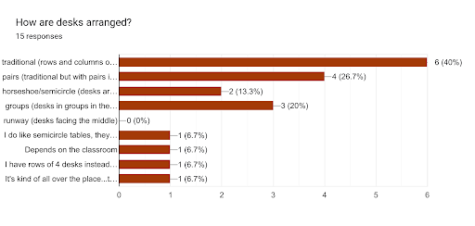
Many students also preferred not to have assigned seating. Unfortunately, assigned seating is required by the admin. This is because it will help teachers prevent bullying, help students stay on task, and make sure the right people are in class. It also helps when there is a substitute. Out of the different desk arrangements, many teachers preferred rows and columns. Some rows and columns would be single desks, pairs, groups of four, etc. No teacher had a runway-style classroom. Many students preferred groups yet, teachers preferred to have traditional desk arrangements. This allows teachers to maintain higher levels of classroom management. For some teachers, traditional seating is where students all have the same type of desk, so there is minimal fighting. Flexible seating also has limitations, especially in science classrooms. This is due to science classrooms having labs, and flexible seating, especially ones with fabric, which are at risk of spills and other accidents.
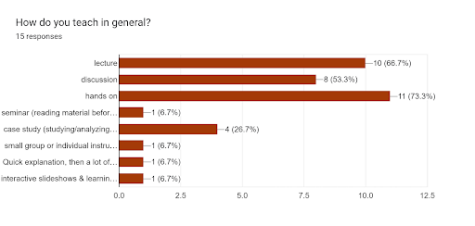 For the general teaching style, teachers focused mainly on lectures or hands-on-based learning. While lectures were the least popular for students, they are easy for teachers to do, have minimal planning, and allow for easier note-taking.
For the general teaching style, teachers focused mainly on lectures or hands-on-based learning. While lectures were the least popular for students, they are easy for teachers to do, have minimal planning, and allow for easier note-taking. 
Most English teachers teach in lecture or discussion-based learning. Students preferred discussion-based education.
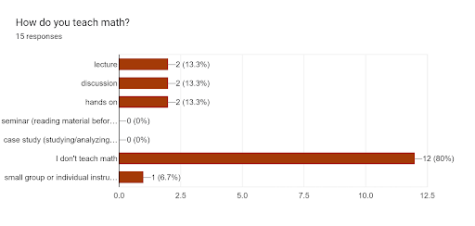 Math teachers taught similarly to English teachers, focusing on the lecture or discussion-based learning. This allows for better note-taking for students. The hands allow for practice problems and individual problem-solving.
Math teachers taught similarly to English teachers, focusing on the lecture or discussion-based learning. This allows for better note-taking for students. The hands allow for practice problems and individual problem-solving.
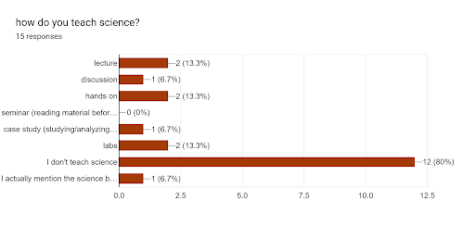
For science, most teachers focused on lectures, hands-on, and labs. The most popular teaching style for social studies is hands-on learning.
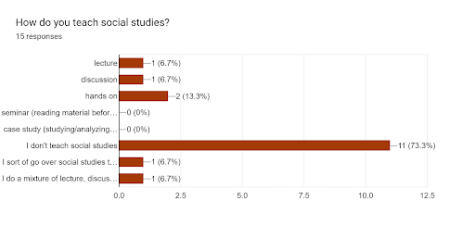
Surprisingly many social studies teachers do not use a case study method to teach social studies. Contrast to students where many would like case studies. Out of the students though, discussion-based learning is the most popular. For teachers, it is hands-on based learning.
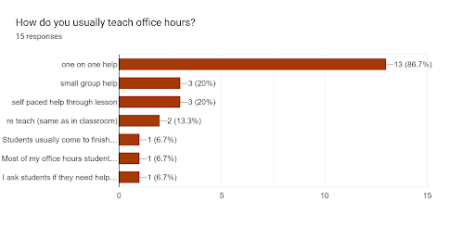 Most teachers have office hours after school. This would make sense as office hours for certain subjects are scheduled on different days. The second most popular is during the 0 and 4th hour on Wednesdays. Thankfully students can agree, after-school office hours are the most helpful. Many students also find individual class time office hours helpful, but there are limits to this. To qualify for office hours, the student must complete all classwork for that day. For teachers, office hours are mostly one-on-one help. This is good because many students prefer one-on-one help. For many teachers, office hours are for test retakes or corrections.
Most teachers have office hours after school. This would make sense as office hours for certain subjects are scheduled on different days. The second most popular is during the 0 and 4th hour on Wednesdays. Thankfully students can agree, after-school office hours are the most helpful. Many students also find individual class time office hours helpful, but there are limits to this. To qualify for office hours, the student must complete all classwork for that day. For teachers, office hours are mostly one-on-one help. This is good because many students prefer one-on-one help. For many teachers, office hours are for test retakes or corrections.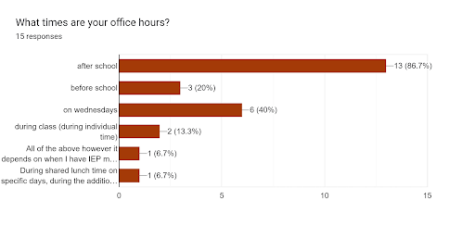
While students prefer many things for their classrooms, many decisions go into classroom planning. Some of these decisions lead to limitations due to safety or the teacher’s budget. Students would love to have an ideal world, but they do not know the thing teachers have to do, this includes planning, grading, assessing, pre-assessing, reassessing, differentiating, etc. All the decisions and factors that go into teachers’ planning and organizing their classrooms can limit what they do. Teachers do many things for students, but they cannot do everything students request.

